Lausanne builds Switzerland’s first metro
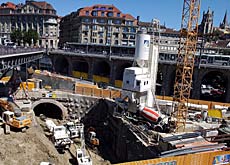
Engineers have begun construction of Switzerland’s first underground railway system in Lausanne, aimed at better connecting the north and south of the city.
The ambitious, technologically innovative project is expected to improve mobility for Lausanne’s 250,000 inhabitants.
The M2 project will replace an existing funicular railway connecting the city centre with the banks of Lake Geneva.
The new system will have the capacity to transport 70,000 people a day, or 25 million a year. The journey time between the north and south of the hilly city should be reduced to less than 20 minutes.
But the project is a complex one, and much of the city will have to be dug up for the tracks to be laid.
Challenge
“The M2 is a challenge for our engineers,” Davide de Micheli, a spokesman for the Federal Transport Office, told swissinfo. “It’s based on innovative technology, used for the first time in Switzerland but appropriate for Lausanne’s hilly landscape.”
De Micheli said that like San Francisco, Lausanne had been forced to find new transport solutions to the problem of its steep hillsides.
“Lausanne was the first city in Europe, if not the world, to build a funicular railway at the end of the 19th century,” he said.
Although the metro project got the go-ahead from voters in 2002, work only began in spring of this year.
“The first challenge is to construct an underground infrastructure in an urban area,” pointed out Marc Badoux, the engineer in charge of the project.
The northern half of the city is expected to be under development until 2008. Bulldozers, cranes and around 300 workers are employed on 15 separate building sites.
The construction work is generating a great deal of interest. Passers-by stop to check on progress, while the Lausanne tourist office has begun organising guided tours.
Technology
The construction of tunnels and railway stations is one challenge. Another is to ensure that the system as a whole functions properly.
“The system depends on a mix of cutting-edge technologies, all of which have been tried and tested abroad,” Badoux told swissinfo.
“This is a fully automatic underground train which runs on tyres, not a cog railway, despite an average gradient of 5.7 per cent, rising to 12 per cent in certain places.”
The government in Bern is watching progress keenly. “Our role so far has been to approve the canton Vaud plans, but we also have to check that everything is done right in order for the new metro to open,” said de Micheli.
Olivier Français, the city councillor in charge of construction projects, said the underground would make it a lot easier to travel around Lausanne.
The advantages of the new system would more than make up for the inconvenience of four years of construction work. “The city will be enhanced,” said Français.
“The urban centre and local business will retain their attractiveness, and everyone will be able to move around easily.”
Network
The underground is envisaged as the spinal column of the public transport network in Lausanne, serving the north-south axis.
New bus routes are planned which will connect with the metro. But the underground will also link up with the cantonal and national railway networks.
The M2 will replace the funicular railway, which for 125 years has linked the city centre with Ouchy on Lake Geneva, and which will close in 2006.
The project is expected to cost SFr590 million ($472 million), with SFr305 million pledged by canton Vaud and at least SFr70 million coming from the federal government.
Less than half of the total budget will go on the cost of machinery. Fifteen trains have been ordered from Alstom, which makes the high-speed French TGV as well as trains for the Paris metro.
swissinfo, Isabelle Eichenberger
The M2 metro will cover the 6km from Ouchy (372 metres above sea level) to Epalinges (700 metres) in 18 minutes.
It will carry 70,000 passengers a day, or 25 million a year.
The project is estimated to cost SFr590 million ($472 million).
Work will take four years.

In compliance with the JTI standards
More: SWI swissinfo.ch certified by the Journalism Trust Initiative
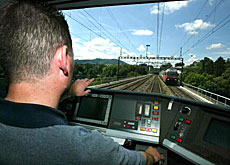
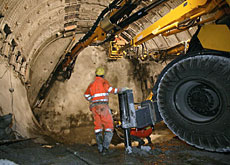
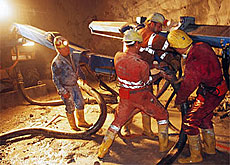
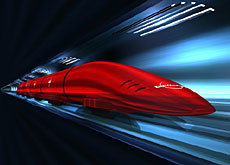
You can find an overview of ongoing debates with our journalists here. Please join us!
If you want to start a conversation about a topic raised in this article or want to report factual errors, email us at english@swissinfo.ch.